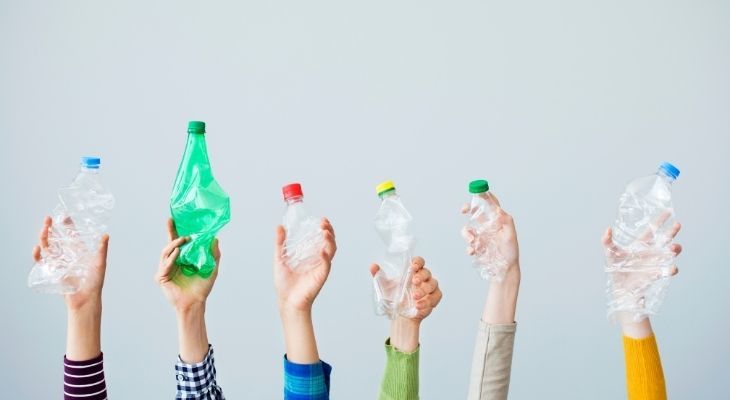Conquering Australia’s plastic problem
Every minute, a million plastic drinking bottles and 9 million single-use plastic bags are produced worldwide, contributing to the 300 million tonnes of plastic waste we generate each year. Much of this ends up in the environment, where it can persist for centuries.
In Australia as elsewhere, the realisation is now growing that we are living in a society filled with plastic. Most consumers and producers agree that we need to cut back on our production of plastic and to find better ways of managing our plastic waste.
This has led to initiatives such as the federal government’s National Plastics Summit in March 2020, and the recent announcement of a National Plastics Recycling Scheme by the peak body of Australia’s food and grocery supply industry, the Australian Food and Grocery Council.
Australian efforts to tackle the problem are growing – from container deposit schemes, to creative business solutions like bulk shopping stores, or return-and-refill container businesses like we’re seeing in the cleaning space.
Not-for-profit APOC, for example, is working with governments and industry towards the 2025 national packaging targets on plastic including 100 per cent packaging to be reusable, recyclable or compostable. In August 2020 the landmark Recycling and Waste Reduction Bill was introduced to encourage responsibility on companies and increase recovery and reuse of waste.
Some states and territories have moved to ban single-use plastic items, introduce container deposit schemes or encourage the incineration of plastic waste to produce energy, while others have not.
And most Australians freely admit they don’t understand the complex issues involved. A recent survey found that over 90 per cent feel they have limited knowledge when it comes to plastic recycling, and more than half were unaware that soft plastics could be recycled at all.
Plastic waste is really difficult to deal with compared to other materials such as glass and metal because it is low density, low value and there are many technical hurdles to overcome.
For this reason, a lot of it ends up in landfills or discarded to become plastic pollution. Most of it never goes away, it simply breaks down into smaller and smaller particles which may then be swallowed by fish and other animals and find their way onto our dinner plates.
The CSIRO recently released the first ever global estimate of microplastics on the seafloor, reporting that there are 14 million tonnes in our deep oceans, a rate 25 times higher than that found by previous studies.
Australia produces 3.5 million tonnes of plastic waste a year. The federal government has set a target of recycling or composting 70 per cent of this by 2025, which is an ambitious goal given that this figure is currently closer to 20%. It is endeavouring to lead the way with initiatives such as the Recycling Modernisation Fund, which aims to mobilise $600 million of recycling investment from governments and industry. The goal is to accelerate the development of a circular economy, where useful materials such as plastic keep cycling through supply chains for as long as possible instead of being used once and then thrown away.
Currently, most recycled plastics are harvested through mechanical means, whereby plastic waste is washed, ground into powders and then melted into new products.
A second option with great future potential is chemical recycling, where many different methods can be used to break down plastic waste into useful chemicals such as fuel or the building blocks needed to create new plastic. But this is still a largely experimental field, and producing useful end products economically at scale remains a challenge.
Waste-to-energy, where waste is incinerated to produce heating or electricity, is another way to deal with plastic refuse. This is a mature technology in use around the world, but not in Australia.
Our first waste-to-energy plant is due to open in WA next year, with many more currently in planning across the country. But waste-to-energy has many Australian critics, who argue that it only causes more problems than it solves and should be banned, as it has been in the ACT.
The will to save our world from the tidal wave of plastic is clearly there, but the ways are still being established. If Australia is to achieve the waste reduction and recycling outcomes that the community desires, it will have to adopt a more national and strategic approach to finding solutions.
-
Subscribe to the latest industry news, insights and AWRE updates.
- Subscribe



